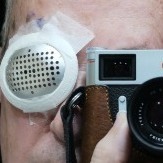Sekonic L-398A Sensor Question
-
Recently Browsing 0 members
- No registered users viewing this page.
-
Similar Content
-
- 74 replies
- 5,520 views
-
- 18 replies
- 1,880 views
-
- 5 replies
- 322 views
-
Sensor cleaning
By Guest,
- 16 replies
- 3,891 views
-
- 4 replies
- 400 views
-



Recommended Posts
Join the conversation
You can post now and register later. If you have an account, sign in now to post with your account.
Note: Your post will require moderator approval before it will be visible.